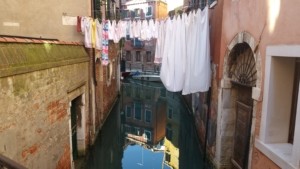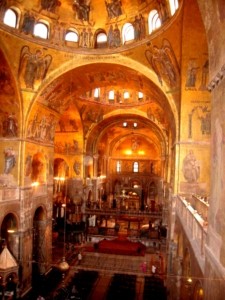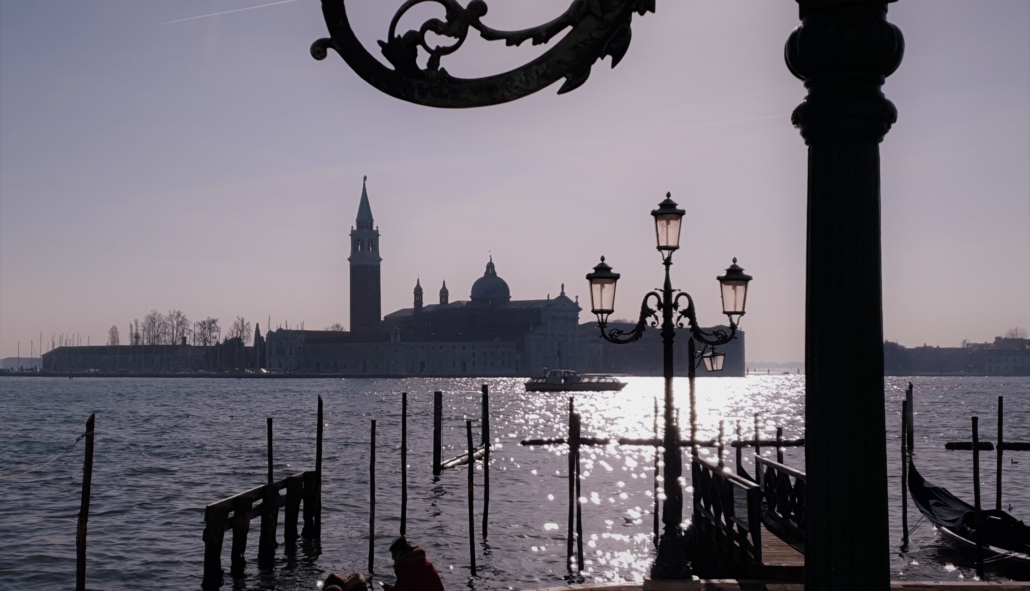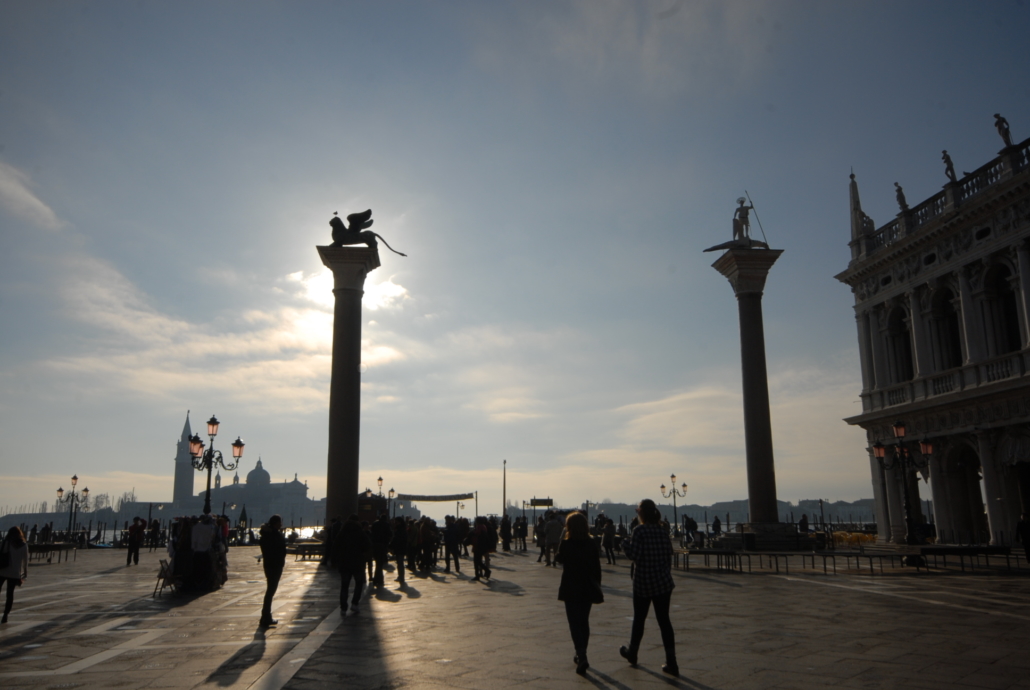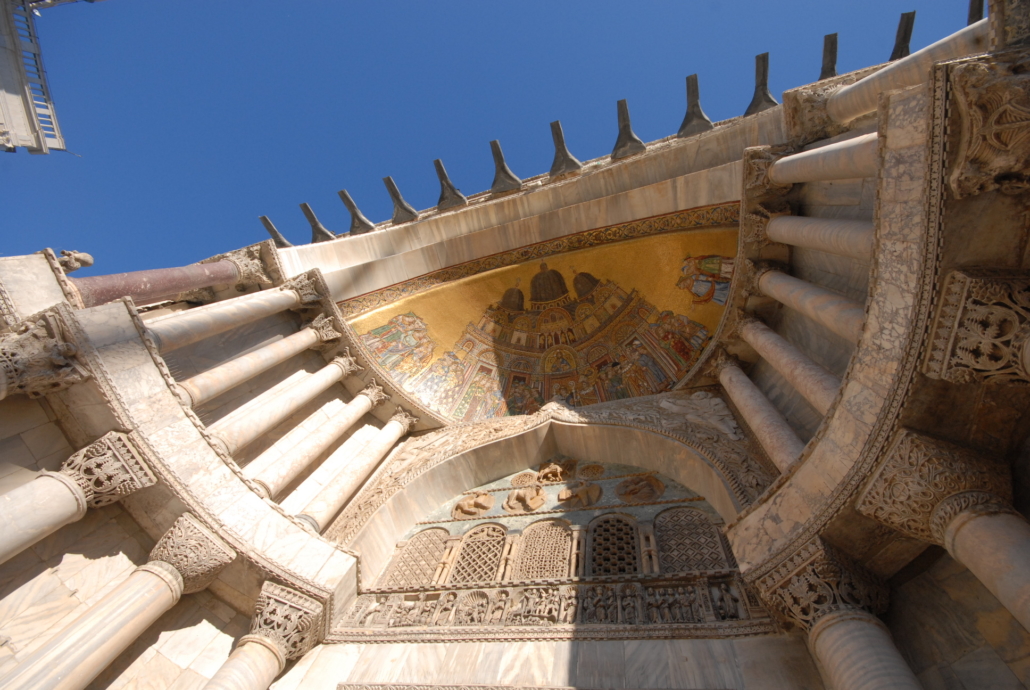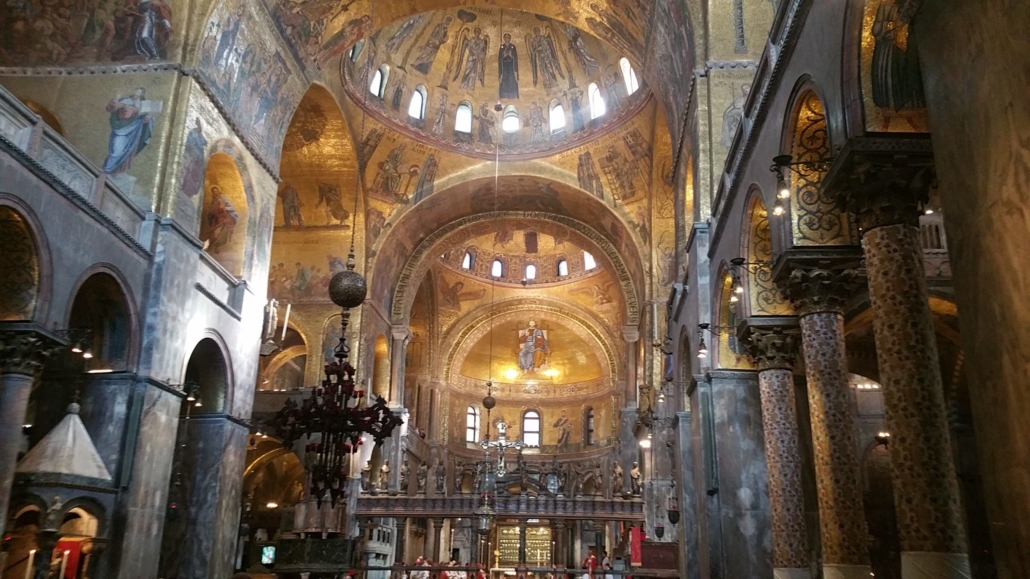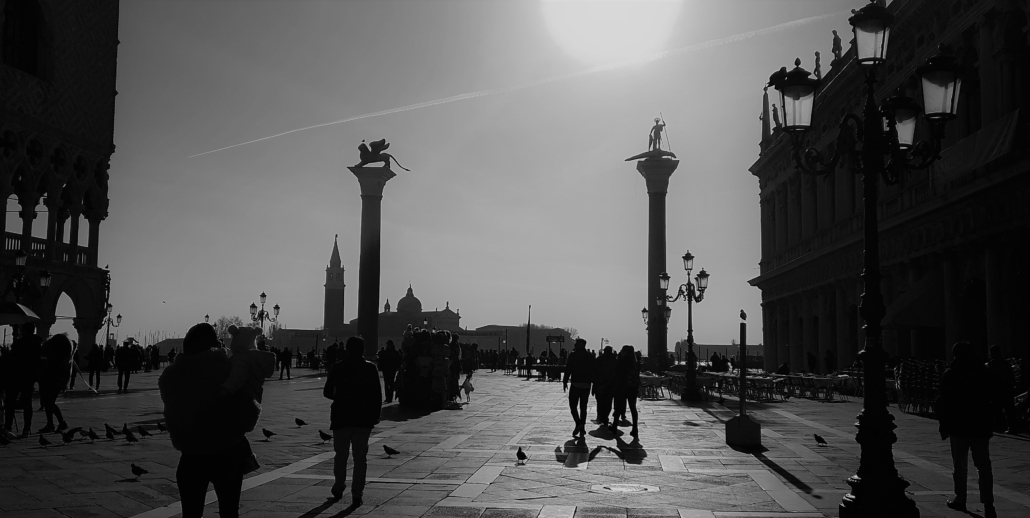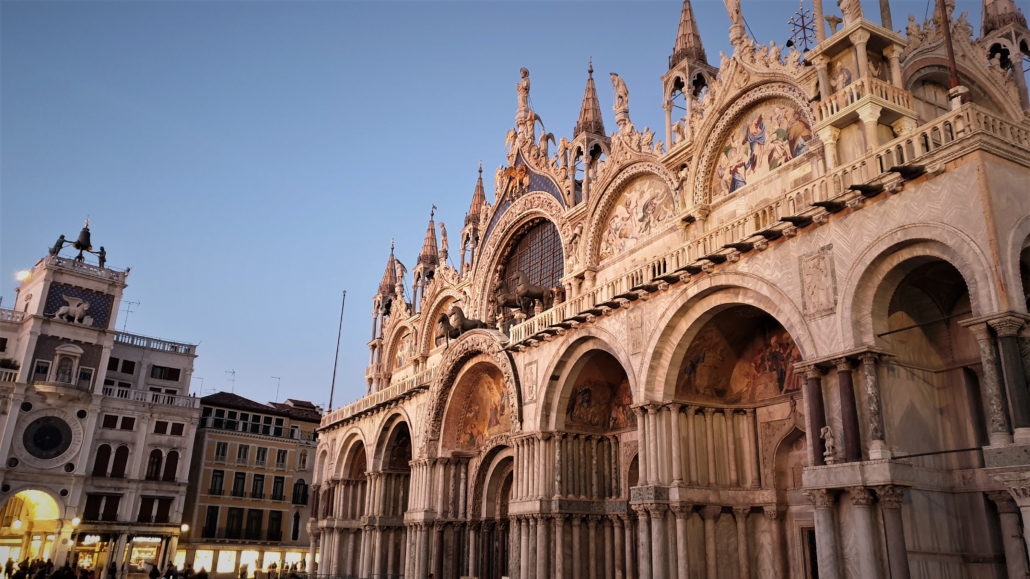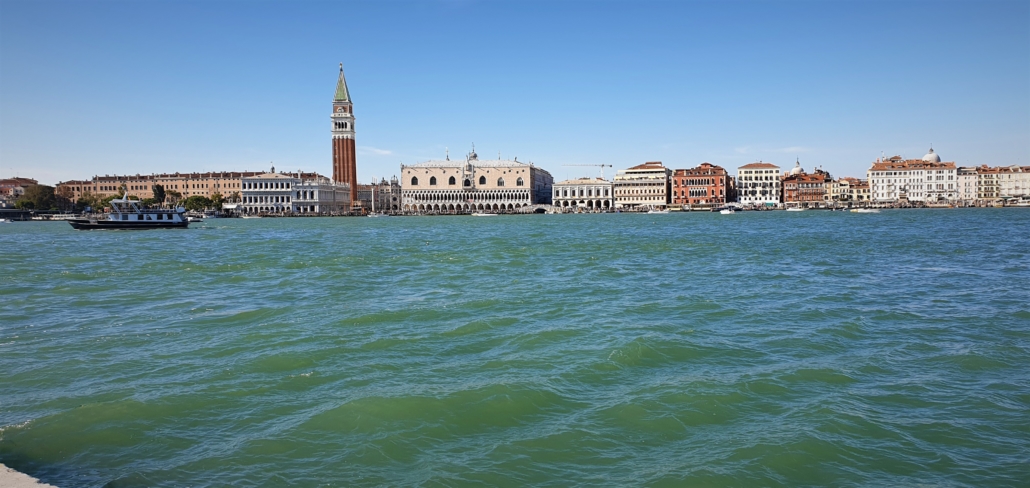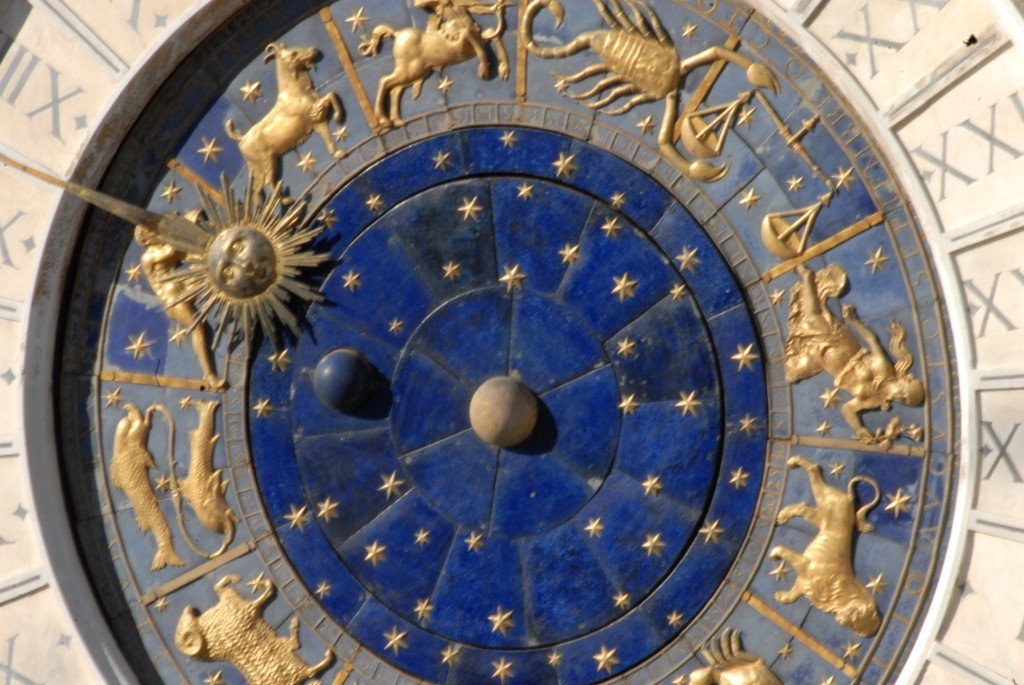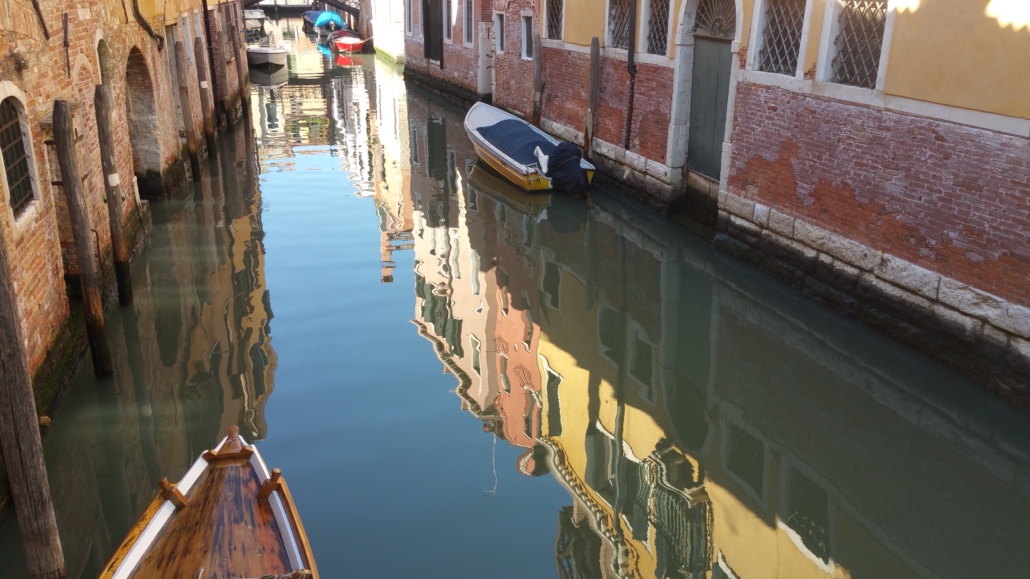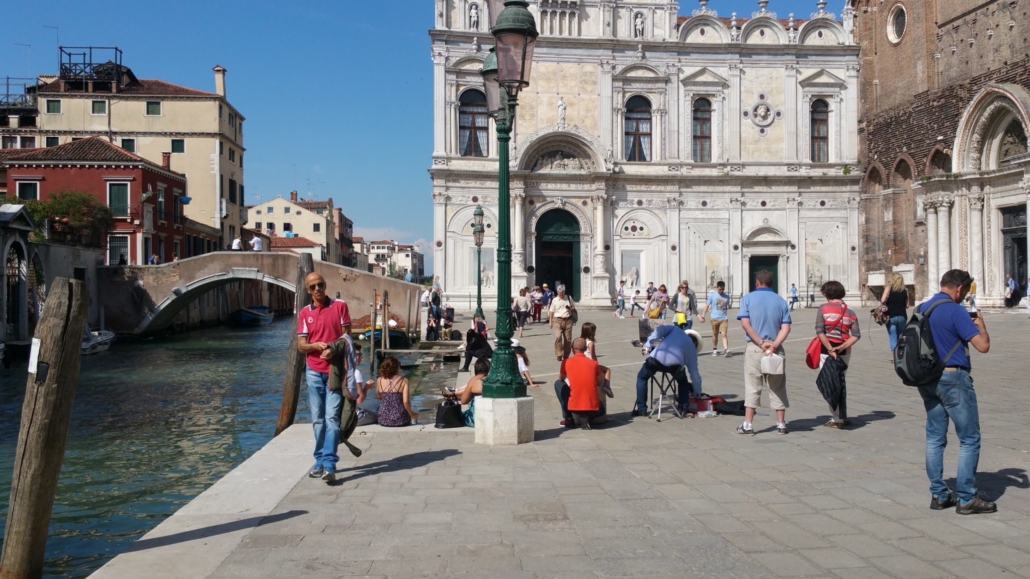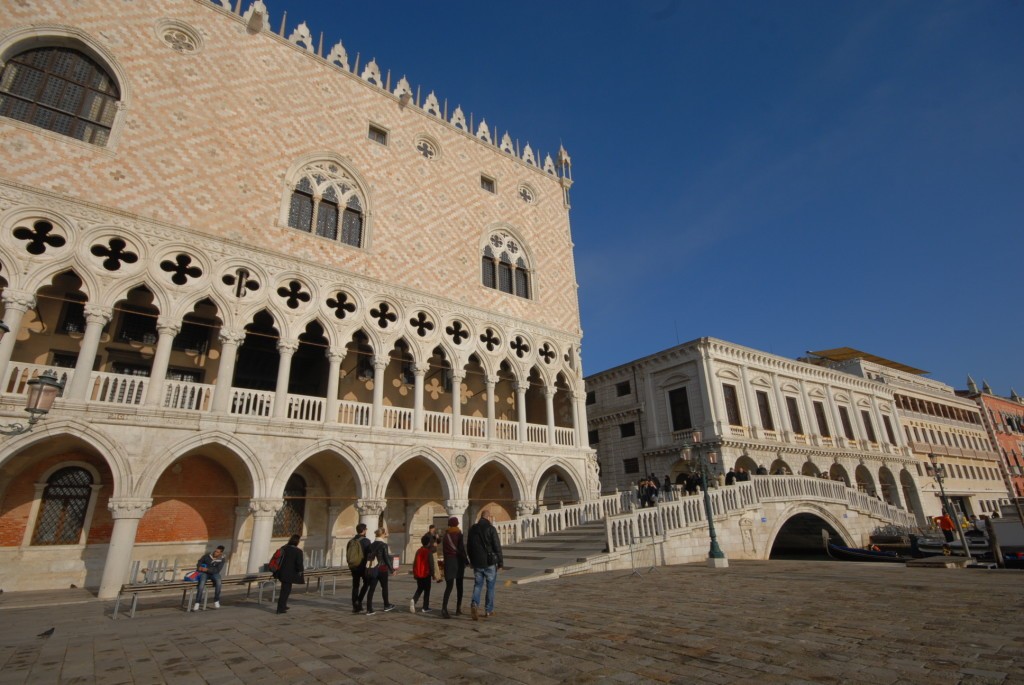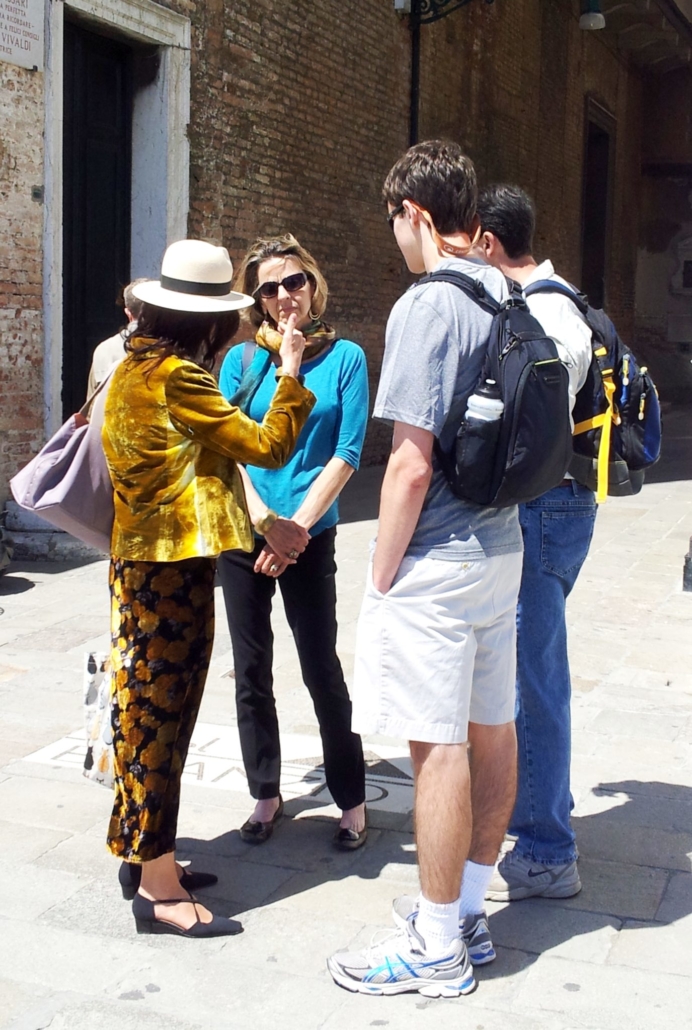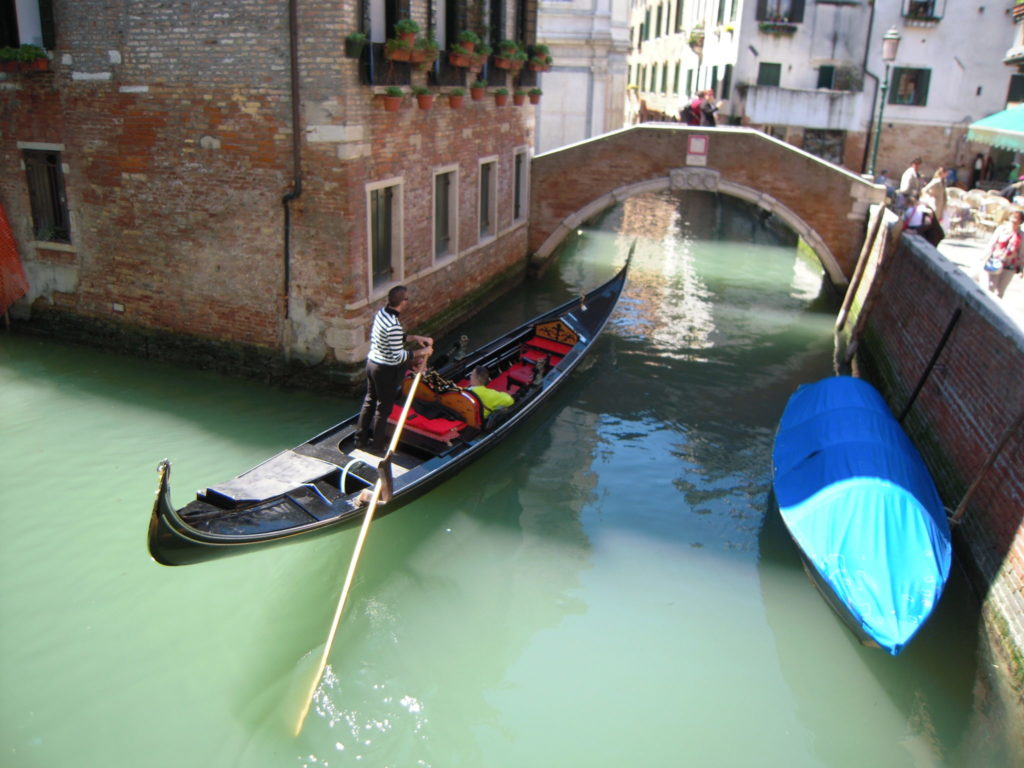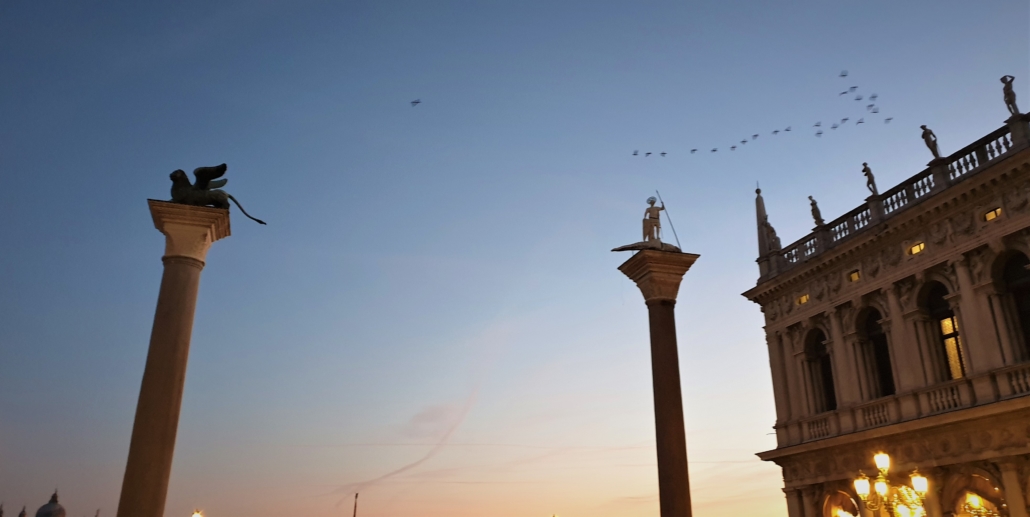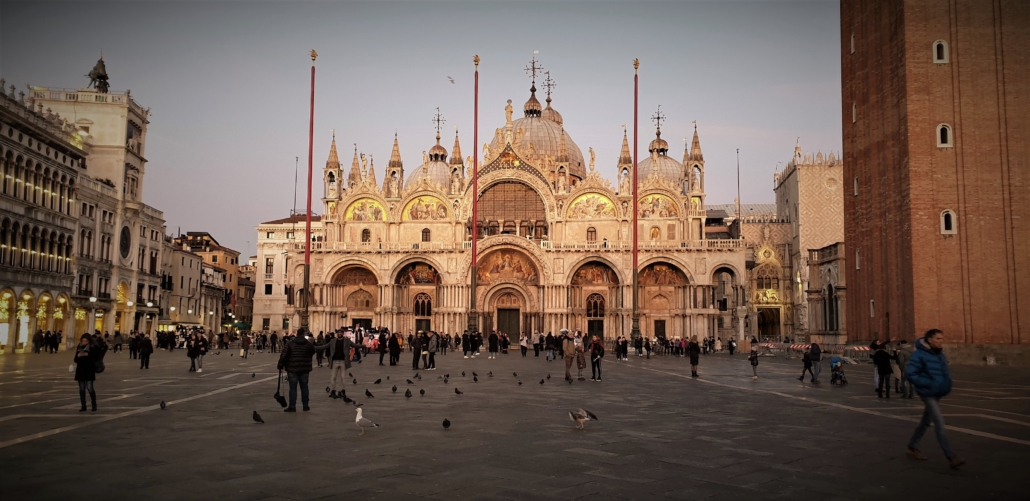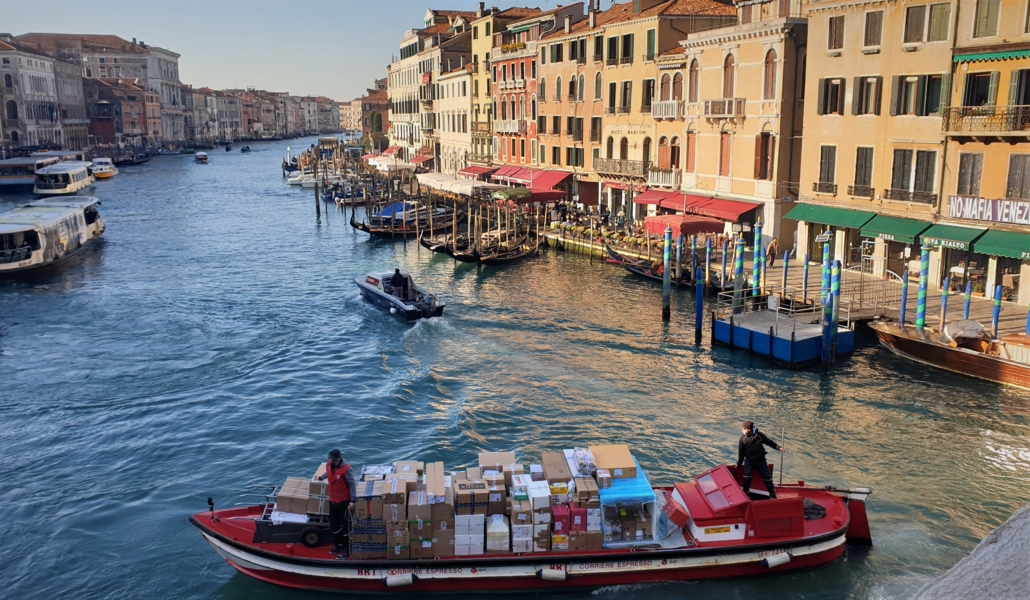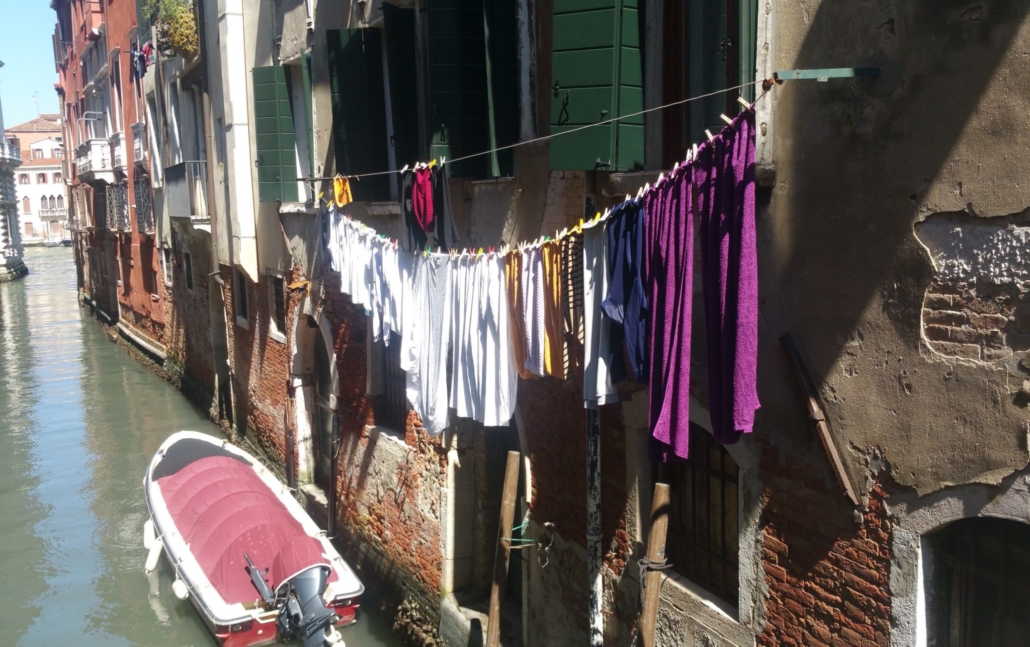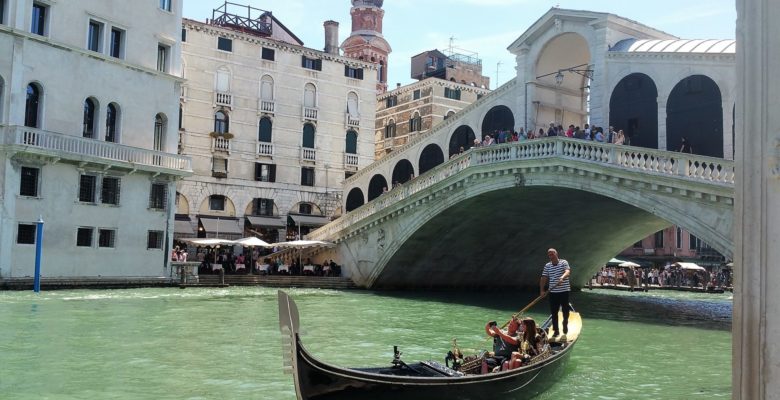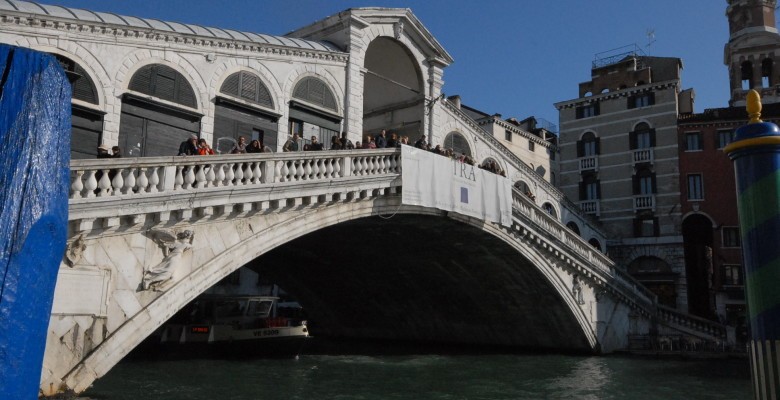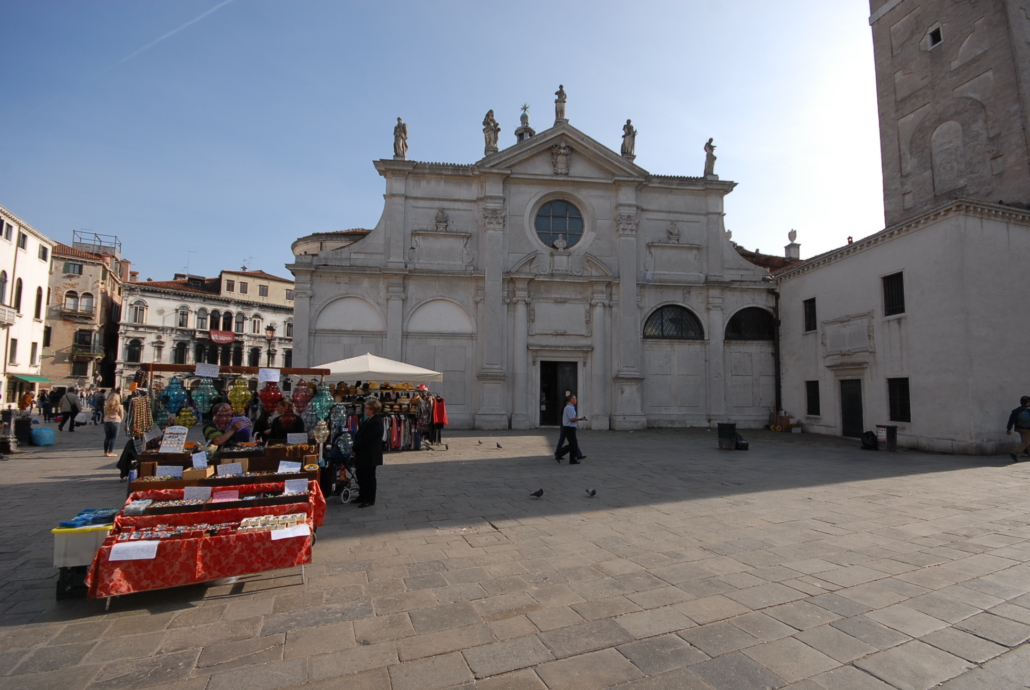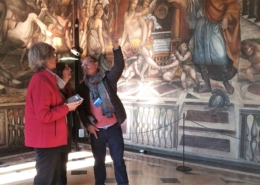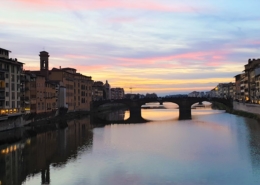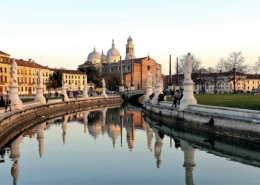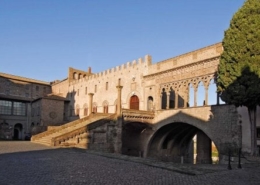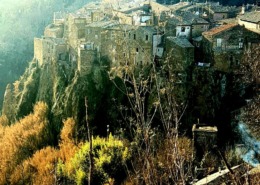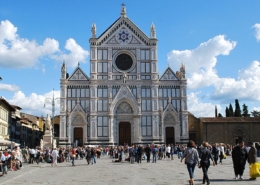Venice: first walk in town will touch some historical sites and elegant squares, such as Campo Santa Maria Formosa, and there will be time to stop for scenic views along the many canals. You’ll learn about how it was possible to build a city in the middle of a salt water Lagoon, on marshy islands, and how the city prospered and slowly declined.
The last part of our ‘Venice: your first walk in town’ will focus on Rialto, once the great business hub of Venice, and of course, today’s main tourists’ attraction. After a stop on the famous Rialto Bridge, the oldest over the Grand Canal, we’ll walk over to explore the market area on the other side, enjoying the lively atmosphere of the ‘heart of Venice’.
Cocooned by the waters of its Lagoon, painterly reflected in the labyrinth of its winding waterways, the noble buildings of Venice are still standing to witness the almost legendary history of this town. You can read thousands of books, enjoy hundreds of paintings, photos, movies, but the experience of visiting it yourself will be unique.
Venice, set in the Northeast of Italy, looks like a fish in the middle of a 210 square miles lagoon, twice a day revived by the tide of the Adriatic Sea, and sometimes, under special weather conditions, getting flooded by it.
The city was founded on a bunch of mudbanks by populations fleeing the Lombards’ invasions some 1300 years ago. Although still officially part of the Byzantine (or Eastern Roman) Empire, Venice, at the time known with the name of ‘Rivoalto’ (today’s ‘Rialto’) by the 8th century had already conquered considerable autonomy and wealth.
The early inhabitants survived out of fishing, fowling, salt trading. Defended by the shallow and perilous waters of the Lagoon, they prospered exploiting their location and became excellent boat builders and traders.
As a liquid fortress, the Lagoon worked as a protection for over a millennium.
Venice, together with Genoa, Pisa and Amalfi was one of the four Maritime Republics, that fought for centuries to master the Mediterranean business routes, above all those going East towards Asia and South to North Africa.
The Republic of Venice was ruled by a ‘doge’ (from Latin ‘dux’ = leader), who was originally elected by a large assembly of men. By the late 13th century the right of sitting in this Great Council was restricted to some 200 prominent families. The men began to call themselves ‘noblemen’ and the Doge slowly became a figure-head.
A series of minor councils (the Senate, the Collegio, the Quarantie and many others) shared the power and controlled each other, with the intent of discouraging any attempt to transform the Republic into a Signoria, as it happened in most Italian city states, where one family strived and obtained total control of the State.
Venice flourished magnificently during the Middle Ages and reached its apogee as a commercial center between the 1200 and 1400s. Rialto is compared by the historians to a ‘Wall Street of the Middle Ages’.
The turning point was in 1204, when the Serenissima Republic managed to convert its participation to the 4th Crusade into a successful operation meant to control all the traffics with the Near and Middle East. This period corresponds to the first great architectural and artistic development and marks beginning of the ‘Myth’.
The second half of the14th century saw the Black Death and the ‘War of Chioggia’ against Venice’s main antagonist, Genoa, slowing down the process of expansion and obliging a change of policy.
After recovering from plague and war, the Venetian State ventured on a number of expensive military campaigns in order to conquer the territories of Padua, Vicenza, Verona, Trento, Brescia, Bergamo. This large area remained under Venetian rule until the end in 1797.
With the great geographic discoveries
in the late 15h century, and with the Ottoman expansion in the Mediterranean in the same period, Venice started a slow but inevitable decline. In 1509 Venice lost the war with Pope Julius II, and this caused the arrest of its policy of conquest in the Italian peninsula.
The 16th century sees the manufacturing of precious objects (velvets, brocades, lace, artistic glass, book printing, cosmetics, leather) and the exploitation of the land dominions filling the gaps left by the loss of monopoly on spice trade and the shrinking of Venetian naval operations in the Mediterranean Sea.
Venice was one of the most populated towns in Europe until the 1600s, with more than 180,000 residents in 1561.
Today (early 2018) it counts less than 54,000 residents.
By the 17th century the situation got worse, due to the tremendous plague in 1630-1631, to the war of Crete against the Ottoman Empire, and, last but not least, the aggressive economical competition with France.
However, private wealth was still enormous in the city at the time. Many magnificent new homes and churches were built in this century, and Venice was considered one of the great capitals of Europe.
By the end of the century, it became one of the not-to-be-missed stops of the Grand Tour: wealthy Europeans, attracted by its unique beauty, by the liberality of its laws, and by the wide number of theaters, music halls and casinos, came by the thousands every year, especially during Carnival, adding enormously to its international fame.
It was still a solid, respected, wisely ruled, aristocratic Republic when, in 1797, it was annexed by Napoleon, who sold it to the Habsburg and got it back in 1806. Venice’s enormous artistic patrimony was horrendously dilapidated.
After 1815 it was once and for all acquired by the Austro-Hungarian Empire.
The Habsburg brought a great deal of innovations, such as the builing of a train bridge connecting it for the first time the islands that form Venice to the Italian mainland.
After a short period of reconquered independence in 1848-49, followed by the third Austro Hungarian domination, Venice and its territories finally became part of the newly born Italian Kingdom in 1866.
Venice suffered some serious destructions during World War I but almost untouched during World War II.
The modern visitor can still enjoy a great part of its original architectures, bridges and canals, as they were built many centuries ago, and the total absence of cars, motorbikes or buses, make walking in Venice an unforgettable experience.
If you enjoyed our ‘Venice: your first walk in town’ you might also like our similar tours in Florence and Rome.
